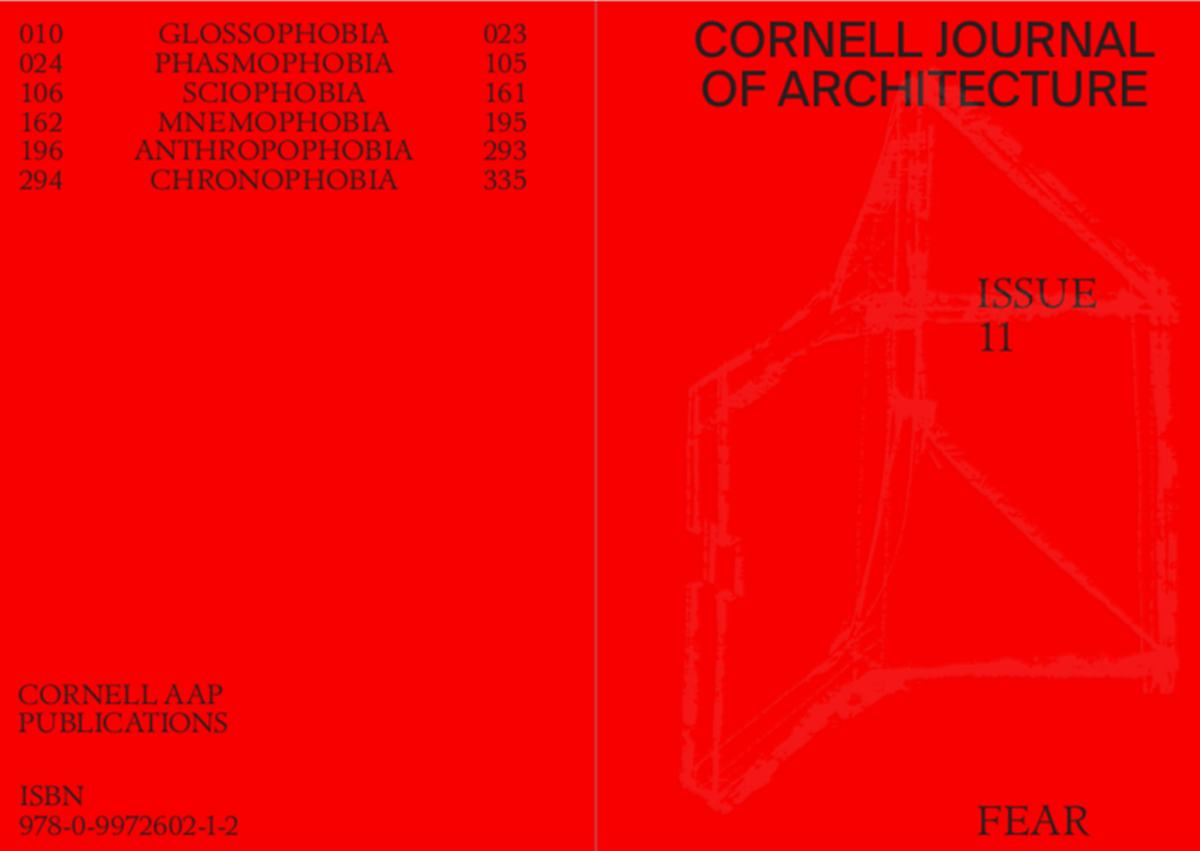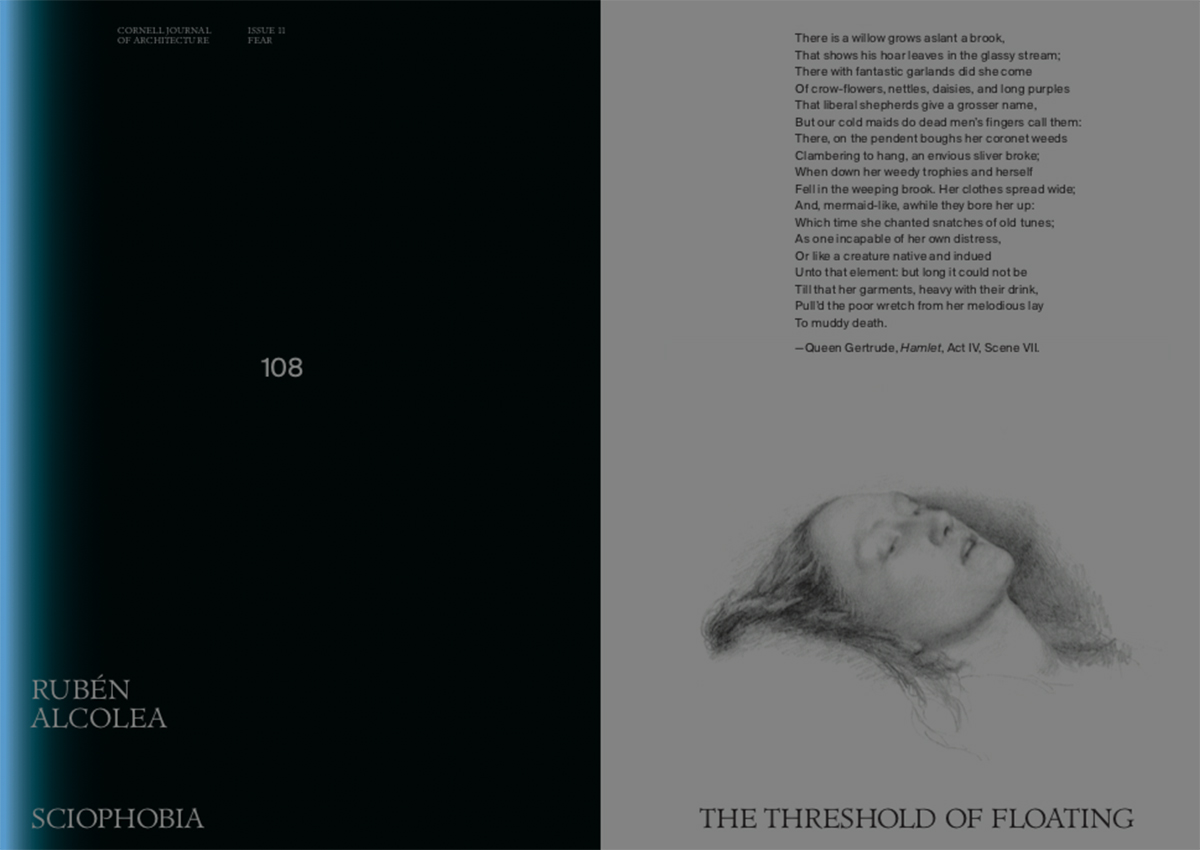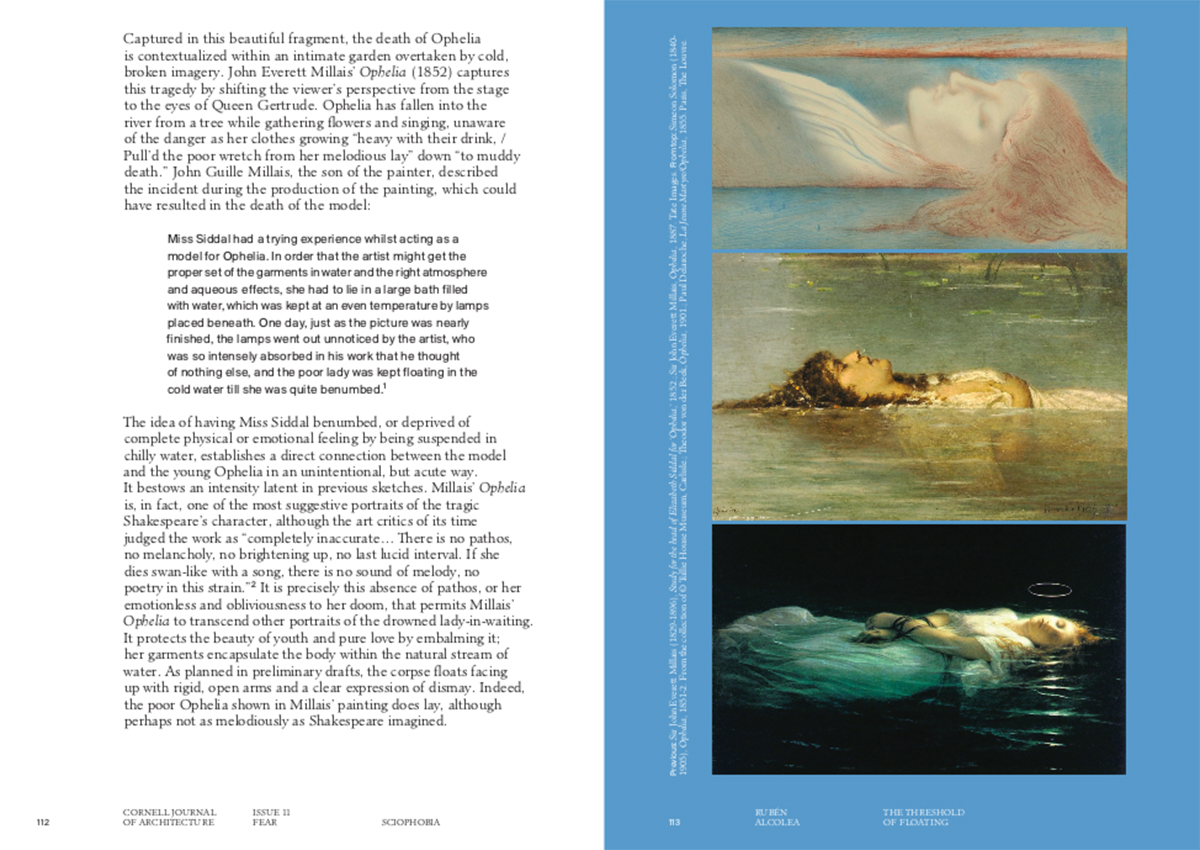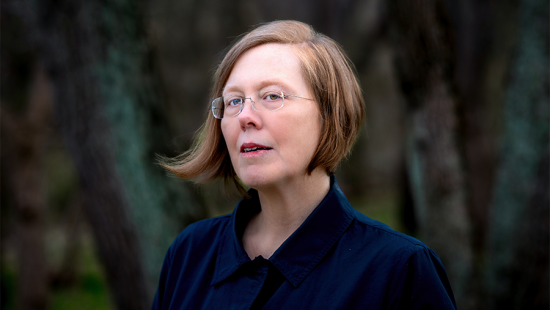Cornell Journal of Architecture "Fear," volume 11 released
The editors of the eleventh volume of the Cornell Journal of Architecture speculate that "Fear" may be the most optimistic yet.

The most recent volume of the Cornell Journal of Architecture, "Fear," was released earlier this year amidst many cancelations, postponements, and changes caused by the pandemic. With the planned spring launch postponed indefinitely, associate professor of architecture and editor-in-chief, Val Warke; the student editorial team led by Hallie Black (B.Arch. '19) and Aya Mears (B.Arch. '18); and architecture department chair, Andrea Simitch share selections from a volume of collected works on the topic of fear, a thematic construct that Black sees as potentially "laying the groundwork for a more hopeful reality" in the context of the events of 2020.
"This issue of the journal represents a finite selection of the many fears that have become real in our contemporary world: glossophobia—fear of public speaking, phasmophobia—fear of ghosts, sciophobia—fear of shadows; mnemophobia—fear of memories, anthropophobia—fear of people, and chronophobia—fear of time. As architects dissect how these real, named fears relate to our practice of design, the authors in this collection speculate on how we might respond."
Andrea Simitch, Chair, Architecture
In the first of three introductory essays titled "Fear-less," Simitch shares, "Given today's political atmosphere, architects are often asked to respond to growing fears of immigration, rooted in a fear of the unknown."
Mapping a few lines of inquiry, Simitch comments, "Many of the essays that follow both respond to fear by asking how architecture might (can it?) edge us toward a more equitable, fearless, resilient world that recognizes the strength there is in difference."
Tess Clancy, Racializing Public Space: Monuments to Racism as Obstructions to Freedom
The editorial team finds Clancy's project topical to the recent Black Lives Matter movement and our national reckoning with racial injustice. "Clancy addresses the Confederate monuments strewn across the country and reveals architecture's complicity in racist systems of power. While proposing ways in which designers may dismantle symbols of white supremacy, Clancy's project also suggests tangible alternatives to heal our cities and democratic spaces. Her article encourages ongoing discussions to continue in the future and emboldens the architect's work in pursuit of systemic change."

Warke, in his essay "A Fearful Preface," positions "Fear," despite the concept's dark intimations, as perhaps the most optimistic volume of the journal yet, sharing that "an awareness of fear has been known to inspire invention, imagination, and substantial change."
In "Learning from Fear," managing editor Aya Mears sees fear as "translating into a desire to rationalize desire into tangible solutions," citing architects that contribute their thoughts on fears such as "stagnation in a field of creativity (Ochshorn); obsolescence by surrendering to nature (O’Donnell) deceit by imagery (Young); forgetting the monumental lessons of history (Boutros); failing oneself or others."
Mears continues, "The pieces in this eleventh volume tackle these irrationalities head-on to renounce fear in favor of humanity."
Rubén Alcolea, The Threshold of Floating
Alcolea discusses the aesthetic motif of the floating body in water and unpacks water's role in reflecting and encompassing fear. According to editors, "Alcolea critically analyzes Pre-Raphaelite paintings of the death of Ophelia, early avant-garde photography and cinema, and contemporary horror film—deftly connecting vastly different time periods, media, and states of water. Through its discussion of psychology and the cinematic experience, his essay establishes a phenomenological understanding of space and highlights architecture's ability to provoke our most heightened senses through the immersive lens of water."


The CJoA is planned primarily by students in the department of architecture's theory and representation class, ARCH 4300/4500: Architectural Publications. The class was taught by associate professor of architecture, Val Warke, who also has served as editor-in-chief since fall 2018 when work on volume 11 began. Work for and beyond the class included a number of different coordinating and editorial roles that were filled by students and recent graduates. The editorial team also worked with professional designer Elana Schlenker to realize a hard copy volume that creatively interprets the theme and organizing principles of the journal, and, with assistant professor of architecture Luben Dimcheff, who provided a cover design.
"The journal has always been multifaceted," comments Warke. "And, it's been many things, including an index of contemporary thought regarding the place of architecture in society, a provocation to both the academy and the profession, and a model of the relationship between representational strategies and architectural theses. It's also been a digest of the various works — designs, writings, and occasionally just images — produced here at Cornell, as well as those produced elsewhere that have a special resonance with our school."
Other contributions to volume 11 include "Fearing the Question," an interview with Thom Mayne, and Richard Rosa's introduction to an analysis of OMA's work titled "Ghost Stories: The DNA of OMA." Several pieces illuminating critical aspects of the discipline by dealing with historical and theoretical topics — including Ignacio Galán's "Spatial Genealogies of Present Fears, New York Italians c. 1900," and Marrikka Trotter's "Dead Life: Robert Adam and the Geological Anxiety" — are included along with others, such as Phillip Ursprung's essay titled "Negotiating, Subverting, Reconfiguring Borders in the English-speaking World."
The Cornell Journal of Architecture, "Fear," volume 11 is now available for purchase.
To learn more about the CJoA please visit cornelljournalofarchitecture.cornell.edu or email cjoa@cornell.edu.





